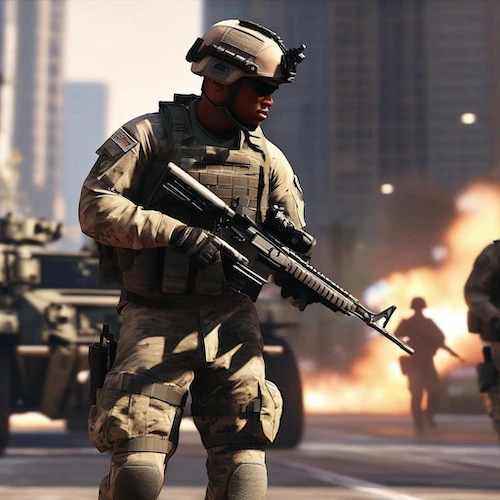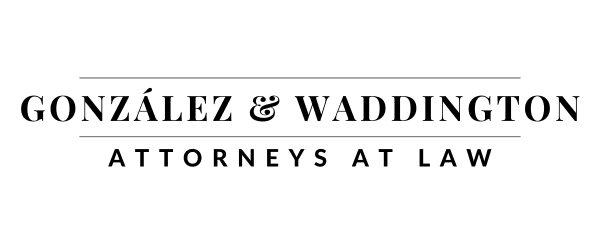2,000 New Psychologists Join the War on Military Sexual Assault
Our military defense lawyers aggressively defend the following UCMJ sexual crimes:
- UCMJ Sex Related Crimes
- Article 117a UCMJ Broadcast Intimate Images
- Article 120 UCMJ Rape
- Article 120 UCMJ Sexual Assault
- Article 120 UCMJ Aggravated Sexual Contact
- Article 120 UCMJ Abusive Sexual Contact
- Article 120a UCMJ Deposit of Obscene Matters
- Article 120b UCMJ Rape of a Child
- Article 120b UCMJ Child Sexual Assault
- Article 120b UCMJ Child Sexual Abuse
- Article 120c UCMJ Indecent Recording
- Article 120c UCMJ Distributing Recording
- Article 120c UCMJ Forcible Pandering
- Article 120c UCMJ Indecent Exposure
- Article 130 UCMJ Stalking
- Article 128b UCMJ DV Strangulation
- Article 132 UCMJ Retaliation
- Article 134 UCMJ Adultery
- Article 134 UCMJ Possessing Child Porn
- Article 134 UCMJ Prostitution
- Article 134 UCMJ Indecent Language
- Article 134 UCMJ Pandering
- Article 134 UCMJ Sexual Harassment
Military hires thousands of psychologists to fight sexual assault
The U.S. Military’s Efforts to Combat Sexual Assault
 The U.S. military has initiated a significant campaign to recruit and train over 2,000 specialists to address and prevent sexual assault and other harmful behaviors within its ranks.
The U.S. military has initiated a significant campaign to recruit and train over 2,000 specialists to address and prevent sexual assault and other harmful behaviors within its ranks.
This initiative responds to a troubling increase in military sexual assaults, which affected around 35,900 active duty service members in 2021, up from approximately 28,600 in 2018, representing a notable 25% rise (2021 Workplace and Gender Relations Survey of Military Members, Office of People Analytics, 2023). This summary is based on Abrams, Z. (2024, March 1). The U.S. Military is hiring thousands of psychologists to help reduce sexual assault. Monitor on Psychology, 55(2). https://www.apa.org/monitor/2024/03/military-sexual-assault-prevention-efforts.
Addressing the Rising Incidents of Sexual Assault
“We had already seen an uptick in prevalence in 2018, and then once again, that number increased,” said Nathan Galbreath, PhD, acting director for the Department of Defense (DoD) Sexual Assault Prevention and Response Office (SAPRO). “This was certainly concerning to us and also to the secretary of defense,” who established an Independent Review Commission (IRC) on Sexual Assault in the Military just days after assuming office.
After 90 days of interviews, observations, and data collection, the IRC released a report highlighting significant issues in the military’s approach to sexual assault, including “a near total lack of prevention specialists.” The urgent need to respond to reported assaults had left little room for preventive measures, often limited to lecture-style meetings or well-meaning but ineffective awareness campaigns such as pancake breakfasts and golf tournaments (Hard Truths and the Duty to Change: Recommendations from the Independent Review Commission on Sexual Assault in the Military, 2021).
“We also found that a key driver of sexual assault, as well as other harmful behaviors, was the culture within a unit,” referred to as the command climate, explained Andra Tharp, PhD, the senior prevention adviser for the DoD Office of Force Resiliency. “When command climate is unhealthy, these behaviors are more likely to take place.”
Integrated Primary Prevention Workforce (IPPW)
The military’s new Integrated Primary Prevention Workforce (IPPW) is designed to address these issues. By 2028, the IPPW aims to recruit, hire, and train over 2,000 psychologists and other prevention experts to serve at numerous military locations and ships worldwide. These specialists will take a holistic approach to reducing risk factors and enhancing protective measures against sexual assault, harassment, suicide, retaliation, and domestic and child abuse.
“This is a real opportunity for the Department of Defense to continue advancing prevention science as a leading force within military health,” particularly concerning suicide, said Rebecca K. Blais, PhD, an associate professor of psychology at Arizona State University and a subject matter expert who has advised the Pentagon on sexual assault and suicide risk. “I’m optimistic that some of these new efforts can promote culture change.”
Understanding Military Sexual Assault Data
The military tracks the prevalence of sexual assault using two metrics: estimates from anonymous surveys and formal reports. Reports made to DoD officials represent between 20% and 30% of the total survey estimate of active duty personnel who experienced a past-year sexual assault. In 2022, formal reports hit a record high with 7,378 service member reports (Department of Defense Annual Report on Sexual Assault in the Military, Fiscal Year 2022, 2023).
“We’d actually like to see formal reports increase in the immediate future,” Galbreath said. “The more people coming forward, the more we’re able to assist them, but it also gives us the opportunity to hold offenders appropriately accountable.”
Disparities in Risk of Military Sexual Assault
Service members who identify as lesbian, gay, or bisexual also face an increased risk. This group comprises 12% of active duty personnel but accounted for 43% of all reported sexual assaults in 2018 (Sexual Assault of Sexual Minorities in the U.S. Military, RAND Corporation, 2021). These individuals are at a higher risk for distress and suicide following a sexual assault, Blais noted.
Intersection of Military Sexual Harassment and Assault
Data indicate that sexual assault in the military is closely linked to experiences of sexual harassment, gender discrimination, and workplace hostility. For female service members who experienced sexual harassment, the risk of experiencing sexual assault tripled between 2018 and 2021 (2021 Workplace and Gender Relations Survey of Military Members, Office of People Analytics, 2023). For men who were sexually harassed, the risk of sexual assault increased tenfold.
Addressing Ineffective Prevention Approaches
These numbers suggest that existing prevention approaches were ineffective. “Over time, our sexual assault prevention has focused on raising awareness about the behavior,” Tharp said. “But being aware of an issue doesn’t really move the needle in terms of changing behavior so that those incidents are less likely to occur.”
In Blais’s work on military sexual assault and suicide prevention, service members described mandatory lecture-style presentations delivered to large groups as impersonal and sometimes even hypocritical. “For a lot of people, particularly women, it felt like false advertising,” she said. “You’re telling me that sexual assault and harassment are not tolerated within the military, but within my everyday experiences, it seems like the norm.”
Future Efforts to Combat Military Sexual Assault
The military’s enhanced focus on prevention through the IPPW and related initiatives represents a crucial advancement. By addressing the fundamental cultural and structural factors that foster sexual assault, harassment, and other harmful behaviors, the military seeks to create a safer and more supportive environment for all service members.
Nonetheless, as Tharp emphasizes, cultural change is a gradual process, particularly in an organization as vast and intricate as the military. Ongoing efforts to recruit and train prevention specialists, refine data collection, and tailor interventions for diverse groups within the military are vital for achieving long-term progress.
Commitment to Combatting Sexual Assault
The U.S. military is taking comprehensive and sustained measures to prevent sexual assault and other harmful behaviors. The introduction of the IPPW and similar initiatives underscores a dedicated effort to address these challenges directly. By fostering a culture of respect, accountability, and support, the military aims to make significant progress in reducing sexual assault and safeguarding the well-being of all service members.
A Fresh Approach to Military Sexual Assault Prevention
Research on best practices for prevention science emphasizes that workshops should be small, interactive, and tailored to the needs of specific groups (Gidycz, C. A., et al., Military Psychology, Vol. 30, No. 3, 2018). The Integrated Primary Prevention Workforce (IPPW) was developed with this science in mind, focusing on customized, locally driven prevention rather than a uniform approach, according to Andra Tharp, PhD, the senior prevention adviser for the DoD Office of Force Resiliency.
Addressing Military Sexual Assault
Military units face unique challenges. Two units reporting similar rates of sexual assault might have different underlying issues. For instance, a unit with a younger demographic and high-stress environment might see a high number of alcohol-related sexual assaults, whereas another unit with an older demographic might face sexual assaults tied to workplace harassment.
“On the face of it, those two installations would have the same kind of ‘problem’ with sexual assault,” Tharp said. “But the approach that you implement to get at the drivers of behavior at a given location might be somewhat different from another location.”
For example, a unit with many members aged 18 to 25 might benefit from training focused on emotion regulation and self-control, while members of an installation in Minot, North Dakota, might need help managing social isolation, suggested Rebecca K. Blais, PhD, an associate professor of psychology at Arizona State University.
Prevention Specialists on the Ground
In the past, the military lacked trained prevention personnel who could analyze local data and tailor prevention strategies to their communities. This will change as IPPW specialists start working one-on-one with commanders to create action plans that address their specific needs. These specialists will take a comprehensive approach to prevention, focusing not just on sexual assault but also on other forms of harassment, interpersonal violence, and suicide.
Promoting Healthy Behaviors
Prevention efforts will tackle risk or protective factors that underlie multiple harmful behaviors, such as promoting problem-solving skills and reducing daily stressors and social isolation. DoD experts hope this approach will make content more accessible and foster a healthier military culture overall.
Changing Behavior and Culture
The IPPW has a strict mandate to focus on prevention and will not engage in clinical work, one-on-one counseling, or incident response. The goal is to clearly separate prevention from response, according to Tharp.
“In the past, even for individuals with a prevention skill set, their priority was always going to be on the individual who needed help in that moment,” Tharp said.
IPPW specialists will help service members develop healthy habits aimed at preventing bad behavior before it starts, including social resistance skills to promote responsible alcohol use, conflict management to improve communication within relationships, and mindfulness to enhance resilience. They will also advise on ways to reduce risk, such as limiting access to firearms and medications when someone is at a heightened risk for suicide and ensuring service members know how to access confidential chaplain counseling services.
Additional prevention activities will support military dependents, promote home safety checks, help service members develop healthy and nonviolent parenting skills, and provide financial literacy training. Preventing substance misuse will also be a significant focus, with IPPW members working with community partners on responsible alcohol sales policies to prevent overconsumption.
Fostering a Help-Seeking Culture within Military Sexual Assault Prevention
A core objective of the IPPW is to cultivate a military culture that encourages help-seeking without fear of judgment or retaliation. Blais noted that achieving this requires a shift in mindset among higher-ranking officers.
“There’s been a huge shift in attitudes toward mental health care,” she said. “Today’s service members are largely open to seeking help, but they might have a commander who is 45 years old (average age for active duty is 28.2) and ‘grew up’ in a different generation of the military, where seeking mental health care was heavily stigmatized.”
To address this challenge, the DoD recruits prevention specialists skilled in attitude and behavior change and trains them to communicate effectively with military leaders. The DoD has also developed a credentialing program for the IPPW, which includes structured onboarding focused on prevention principles, social determinants of health, and effective communication within military communities. Additionally, workforce members must complete 20 to 30 hours of continuing education each year based on their credentials.
“We need our people to stay on the cutting edge of the science, and we know that prevention science evolves pretty quickly,” Tharp said.
Opportunities in the IPPW
The IPPW offers a range of opportunities, from on-the-ground work with commanders and service members to roles in prevention strategy and policy development. Another key focus for the workforce will be translating existing research on preventing sexual assault and other harmful behaviors for the military context.
“There are not a ton of evidence-based approaches specifically developed for the military community, so translating that science is a big piece of what our prevention workforce will be doing,” Tharp said.
Monitoring and Evaluation of Military Sexual Assault Programs
To ensure the IPPW remains on track and achieves its goals of reducing sexual assault, suicide, harassment, retaliation, and domestic and child abuse, the military has commissioned an external review of the new program by the RAND Corporation.
“Given that this is a huge investment and absolutely foundational to the goals of the DoD, we know we have to get it right and learn along the way,” Tharp said. “In addition to our internal monitoring, we thought it was critical to also have an external look to help us continue to improve.”
RAND will evaluate whether the IPPW is recruiting and hiring personnel who are a good fit for the program, whether new hires complete training and achieve competency, whether workforce members are valued by leadership at their various locations, and whether prevention specialists are using data to advise leaders effectively. Ultimately, the department’s evaluation efforts will determine whether changes in command climate, risk, protective factors and harmful behaviors occur.
Conclusions on Military Sexual Assault Prevention
The U.S. military’s comprehensive and ongoing efforts to prevent sexual assault and other harmful behaviors are exemplified by the launch of the IPPW and other initiatives. By fostering a culture of respect, accountability, and support, the military aims to make meaningful strides in reducing the prevalence of sexual assault and ensuring the well-being of all service members.
References for Military Sexual Assault
•APA. (2024). Military Sexual Assault Prevention Efforts. Retrieved from https://www.apa.org/monitor/2024/03/military-sexual-assault-prevention-efforts
•Department of Defense (DoD). (2020). Annual Report on Sexual Assault in the Military.
•2021 Workplace and Gender Relations Survey of Military Members, Office of People Analytics, 2023.
•Hard Truths and the Duty to Change: Recommendations from the Independent Review Commission on Sexual Assault in the Military, 2021.
•Sexual Assault of Sexual Minorities in the U.S. Military, RAND Corporation, 2021.
•Department of Defense Annual Report on Sexual Assault in the Military, Fiscal Year 2022, 2023.



